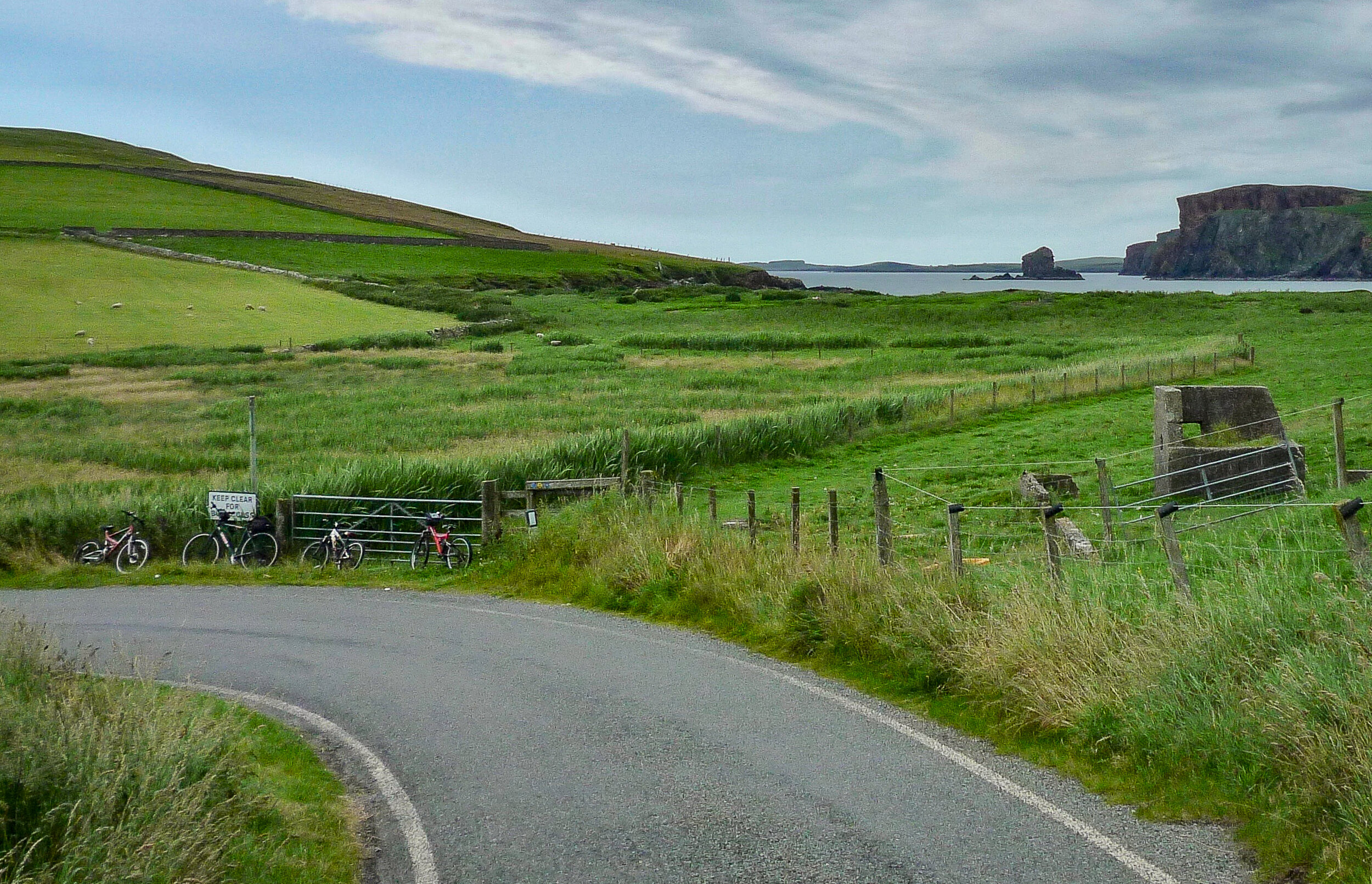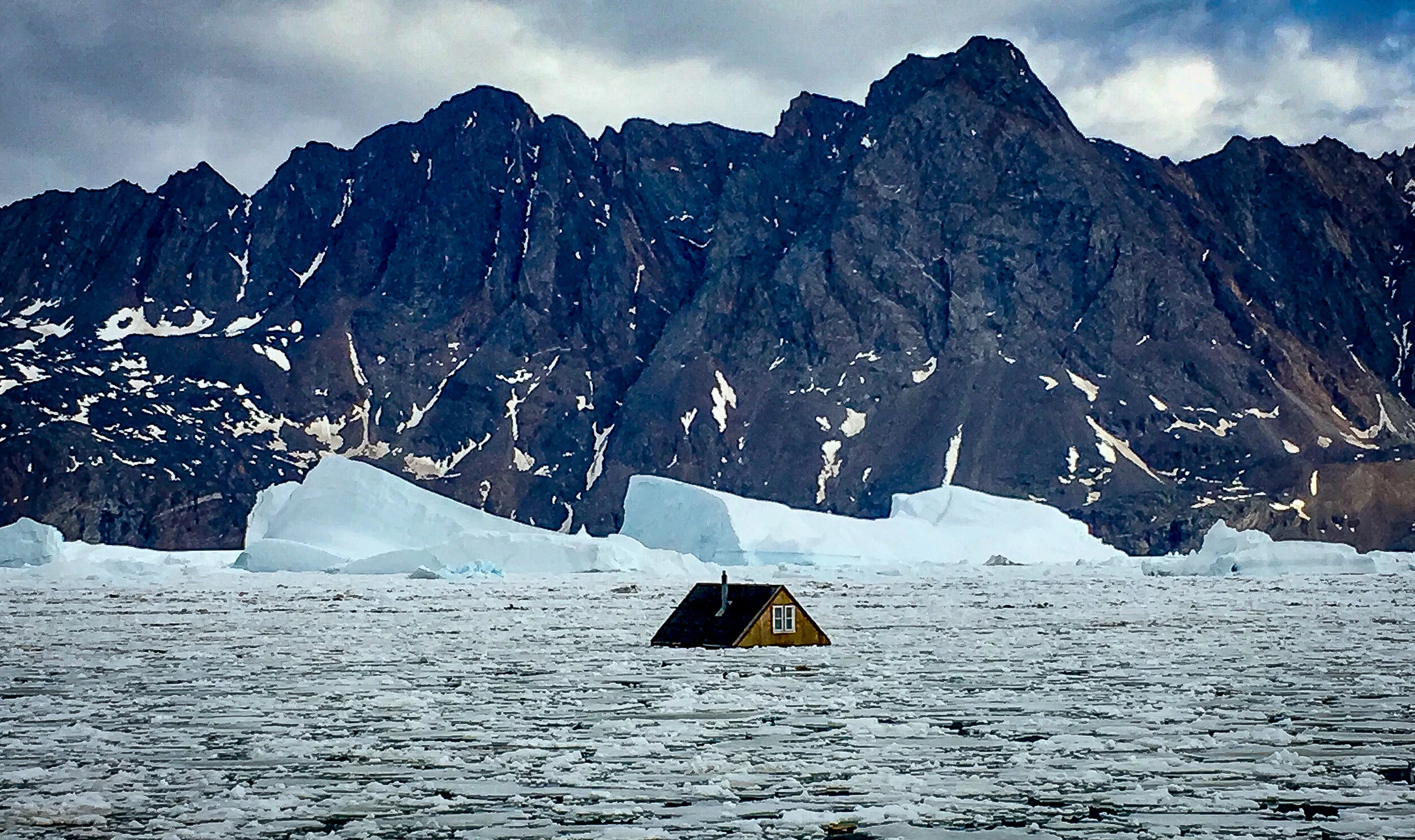Remotely Civilized: Fancy Living Very Far Away?
ARCTIC TRAVEL / SHETLAND
Writer: Tom Morton
Photographs: Tom Morton
June 2021
Strait is the gate, and narrow is the way, which leadeth unto life.
And few there be that find it…
There are single-track roads throughout rural Britain, and the ones receiving the most attention at the moment are those making up the Scottish Highlands’ North Coast 500 route. Even as Masaratis, Lamborghinis and disreputable Vauxhall Novas with very loud exhausts flock there, and there are ridiculous attempts to set the fastest time for completion of the ‘ultimate road trip’, locals are becoming more and more unhappy.
Tom Morton writes from the Shetland Islands.
If we name it, they will come!
It seemed such a great idea at first. If we name it, they will come. Tourists, that is. And they did, even as the self-appointed routemasters seized copyright on the name and a veritable Nomadland of campers, caravans, motorhomes, motorbikes, dodgems and horrible hatchbacks arrived. Then came the accidents, the overloading of local health and recovery services, the blockages of and delays to emergency vehicles; the damage from inconsiderate wild camping and random emptying of chemical toilets.
Copycat routes have sprung up elsewhere - most recently in Kintyre with the ‘K66’ - but the NC500 remains the Highland daddy of all motorised dawdles. It meanders through some of the most spectacular scenery in Europe, and it is for some the first 500 miles of a journey towards the eventual residence in the glorious Highlands, or Islands.
What follows is based on a piece I wrote five years ago for the local Shetland marketing company, so it contains ponies (not that common on the NC500) and probably more sheep than are usually found even in the most rural reaches of mainland Scotland. Bottom line: drive slowly and considerately. If you come to reside here, or anywhere remotely like here, a measured pace and careful consideration for others will be crucial. In everything you do.
JONAA©Tom Morton
I’m driving slowly
You’re driving fast
I will pull in here
I will let you past
Many, indeed most of the roads in Shetland are single track. This is not the same as the mountain biking term, which refers to (mostly downhill) paths to be taking a terrifying speed and with great risk, on what Luka Bloom calls an acoustic motorbike (or even an electrified pushbike, these days).
Single-track roads should not be taken at speed. They should be driven gingerly and with care, especially as, in Shetland, sheep and wild ponies often wander freely and the adjoining land is often unfenced.
That means animals are free to wander. And they do. Shetland is infested with sheep and ponies. Ah, the peerie horses! These wee beasts, cute as they are, can be very unpredictable. So be careful. Even on two-lane roads (notably through the island of Yell) which you may be tempted to drive at high speed if trying to catch an onward ferry, sheep can wander in front of you and have caused numerous accidents. I will not easily forget swerving around one at high speed in a fully loaded hearse.
If you hit a sheep, even if it subsequently runs off, you should report the accident at the nearest house, shop, garage, or police station. The response will vary. It could be a shrug, a nod of thanks, a demand for several hundred pounds in compensation (probably just a….tiny bit steep), or a fusillade of shotgun pellets (only joking; that only happened once, and it was a sort of accident).
Remember, all sheep (and ponies) belong to someone. Insurance policies should be checked to see if your potentially death-dealing antics are covered. If you hit a pony, you are likely to cause serious damage to yourself, the pony and the vehicle you are driving. Even if it is an armoured Humvee.
Basically, do NOT hit a pony. If you do, and you are still alive or not too badly injured, wait for help. Hitting a Shetland Pony is like hitting a house.
As for rabbits and birds, you should be driving slowly enough to scare them off. Do not, however, cause an accident and veer off the road for the sake of a rabbit, a bird, or for that matter, a sheep. Ponies you may wish to negotiate with on a different basis.
“If you hit a sheep, even if it subsequently runs off, you should report the accident at the nearest house, shop, garage or police station.
The response will vary. It could be a shrug, a nod of thanks, a demand for several hundred pounds in compensation (probably just a….tiny bit steep) or a fusillade of shotgun pellets (only joking; that only happened once, and it was a sort of accident)”
JONAA©Tom Morton
If I see you coming
On this single track
If I’m going downhill
Then I’ll go back
Now, the question of passing places. A single-track road is a road wide enough for only one car. Nevertheless, it is not a one-way road, so cars travel on it in both directions. This means that sometimes, indeed often, you will find a car approaching you from the opposite direction.
Then you must look for a passing place.
This will usually be clearly marked, with a pole and the word ‘passing place’. It is very like what is known as a lay-by - a patch of tarmac by the side of the road. But you can park in a lay-by. You MUST NOT park in a passing place. Because it is for PASSING, NOT parking.
Gaps in a fenced road with gates are for access. Do not park in front of them. If you use one as a passing place, be prepared for disguises potholes that will break your suspension, or if you’re driving a low-slung Italian sports car, the entire papier maché chassis.
The general rule is, whoever is nearer a passing place (either in front or behind) should pull off into it (if it is on the left-hand side of the road, remembering that in the UK, we drive on the left) or, if it is on the right-hand side, stop OPPOSITE it. (do not swerve to the opposite side of the road and stop in the passing place itself).
If two cars meet on a hill, and both have passing places behind them, in general, it is the car coming DOWN hill that should reverse and find the passing place, as it is much easier to control a car reversing uphill.
If you are sightseeing and a faster car comes up behind you, it is polite to let them pass by pulling into a passing place (or opposite one). It is rude to flash your lights or sound your horn if you are driving the faster vehicle and wish to get by. One famous musician in the Western Isles, annoyed by someone doing this behind him, simply stopped in the centre of the road, abandoned his car, locked it, and walked home, oblivious to the gutteral imprecations and horn-blowing behind him. He lived in the house at the end of the road and knew no one who mattered to him was due to visit.
It is common in Shetland to salute (for the most part, cheerily) anyone who stops for you. It is also common in Shetland to wave at everyone you meet on a single-track road. This can be a full, regal palm-flutter, a single lordly finger (not the middle one) or even a mischievous flick of the head. It’s nothing personal. It’s manners. I remember members of a not-quite-famous rock band touring the isles and rejoicing afterwards that “everyone knew who we were - they all waved!” Musicians…
JONAA©Tom Morton
I will wait for you
There is no disgrace
In being first
To the passing place
Ponies again: Shouting at them does not work. Offering them carrots or other vegetables through a window will bring them and indeed their distant relatives flocking to your car, almost certainly damaging its sensitive bodywork. And indeed, will bring them flocking to your car (or the unsuspecting person who has hired it subsequently) for many decades to come, as they have very good memories.
Driving in Shetland, and for that matter, in the wilder parts of single-track Scotland, can be a delight. But go safely. Go slowly. Go carefully and let the locals who know the roads and are in a hurry past. That’s what passing places are for. And if you choose not to, well, that’s your privilege. Just remember, when you park up for the night: cleaning dried slurry off a hired car or camper is never a pleasant task. ▢
Thomas "Tom" Morton is a well known Scottish writer, broadcaster, journalist and musician. Author of several books e.g. the biography of Gaelic rock band Runrig, a whisky travelogue The Spirit of Adventure and several novels published on both sides of the North Atlantic. He has written as a journalist, staff reporter and columnist for e.g. the Daily and Sunday Express, The Shetland Times and The Scotsman and had his music show on BBC Radio Scotland for years. Tom Morton lives and works mainly in the Shetland Islands. Read Tom Morton’s Newsletter here.


















